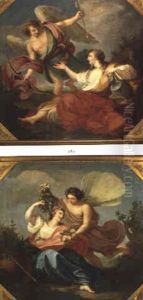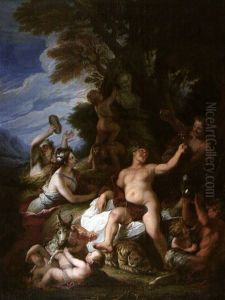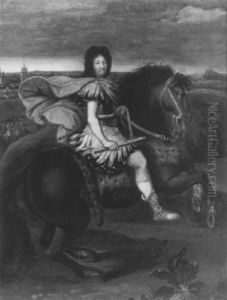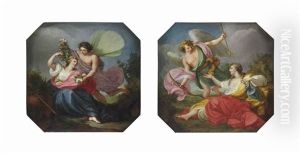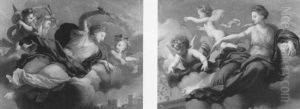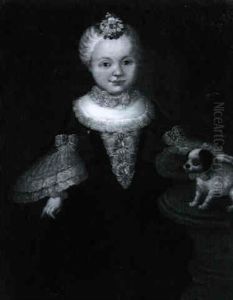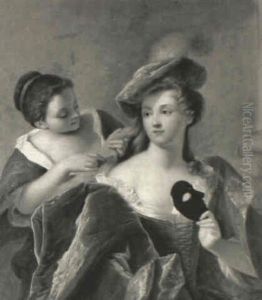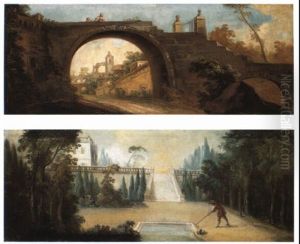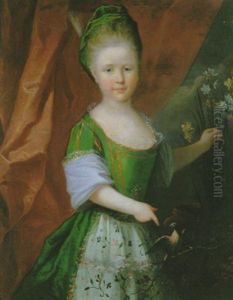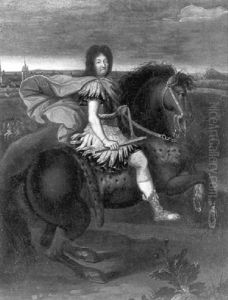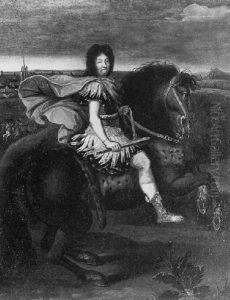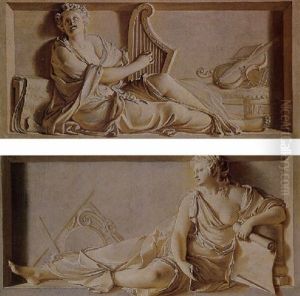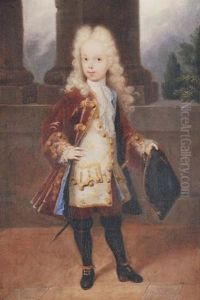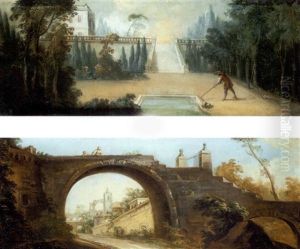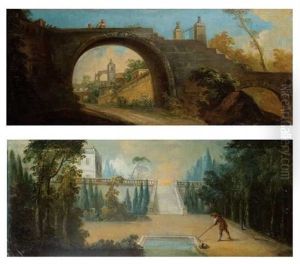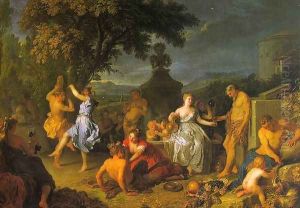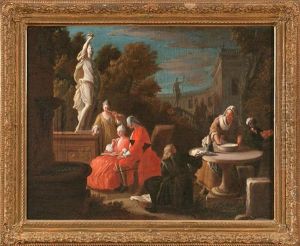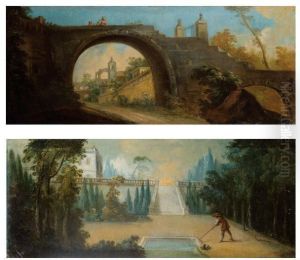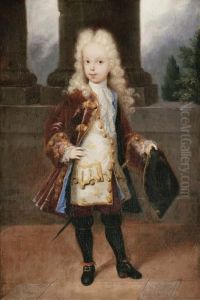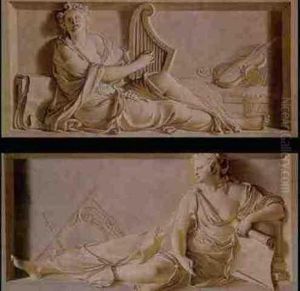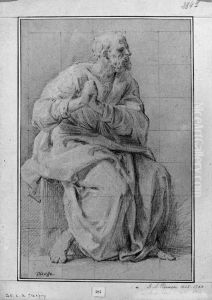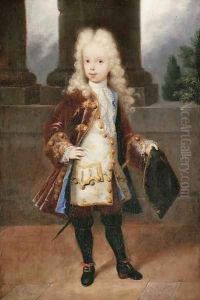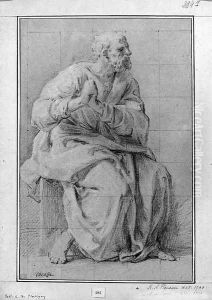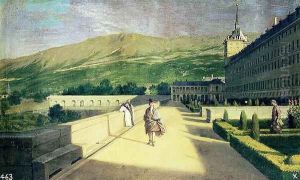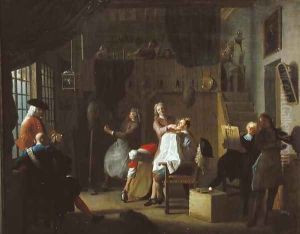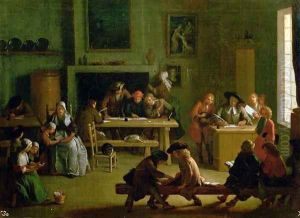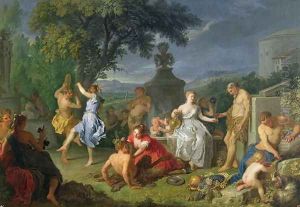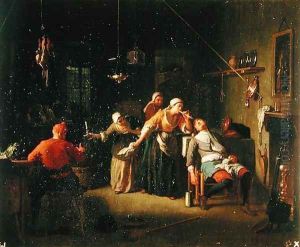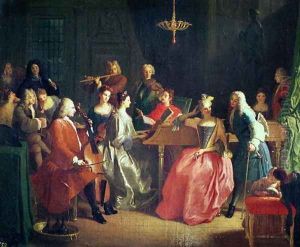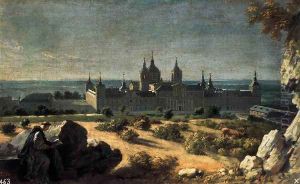Michel-Ange Houasse Paintings
Michel-Ange Houasse was a French painter born in Paris in 1680. He was part of a notable family of artists, being the son of the renowned French painter René-Antoine Houasse. Despite the overshadowing fame of his father, Michel-Ange managed to carve out his own place in the art world of the early 18th century. His journey into art began under the tutelage of his father and was later influenced by the works and teachings of other prominent artists of the time.
Michel-Ange's style was deeply rooted in the Baroque tradition, yet he displayed a remarkable ability to adapt and evolve his techniques and subjects. His oeuvre includes a wide range of works from religious and mythological scenes to more intimate court portraits and landscapes. This diversity in his work showcases his versatility and mastery over different genres of painting.
In 1707, Michel-Ange Houasse's career took a significant turn when he moved to Spain. He was invited to the Spanish court by Philip V, where he became one of the primary court painters. This period was particularly fruitful for Houasse, as he produced numerous paintings that were highly appreciated for their elegance, attention to detail, and vivid portrayal of courtly life. His work during this time contributed to the development of the Spanish painting tradition and influenced subsequent generations of artists in Spain.
Despite his success, Michel-Ange Houasse's work was, for a long time, less recognized outside of France and Spain, overshadowed by the grandeur of his contemporaries. However, recent scholarship and exhibitions have begun to re-evaluate his contribution to European art, highlighting his skillful execution and innovative approach to composition and color.
Michel-Ange Houasse passed away in 1730 in Madrid, leaving behind a rich legacy that illustrates the cross-cultural exchange between French and Spanish art in the early 18th century. His works are preserved in several major museums around the world, serving as a testament to his artistic achievements and the enduring appeal of his art.
